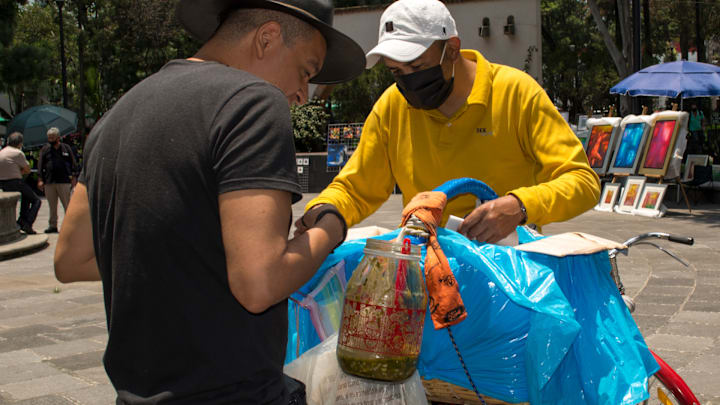Tacos de canasta (or “basket tacos”) were not the first tacos ever made, but their origin is inextricably linked with the history of that culinary classic.
The word taco originally meant “plug” or “wad” in Spanish, and it was used by miners to describe the gunpowder-filled parcels they would stuff into rock faces to excavate precious ores.
Silver was Mexico’s top export for most of the 19th century, and the workers who mined it needed quick, satisfying meals they could eat on the job. A hearty stewed filling—or guisado—tucked into a tortilla ticked these boxes. It’s easy to see why these snacks reminded miners of their own explosive tacos—especially if they had a spicy kick to them. Instead of paper wrapped around gunpowder, these edible tacos consisted of tortillas wrapped around savory fillings.

The edible tacos had to travel well, so miners stacked them and wrapped them tightly with napkins to keep them warm. And that simple but effective transportation method may well have contributed to the street food revolution Mexico saw in the 20th century.
In the latest episode of Food History, host Justin Dodd connects those early “miner’s tacos” to the “basket tacos” that can be found on Mexico City street corners today.

It’s a story that includes an innovative entrepreneur, massive intra-national immigration, and more than a few ladles full of hot fat.
To stay up-to-date with new episodes of Food History, subscribe to our YouTube channel here.
